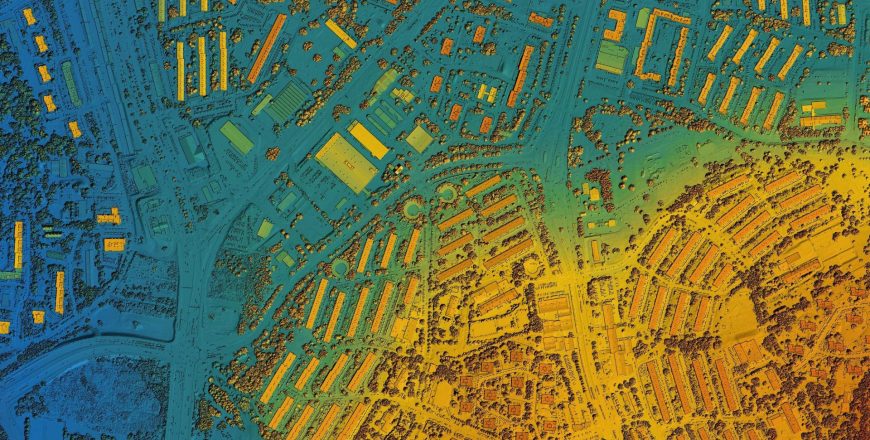FTTx Planning and Designing with GIS (Hands-on)

Course Overview
This hands-on course delves into the planning and design of FTTx networks using GIS software. Participants will explore the critical aspects of Optical Distribution Network (ODN) design, including the routing of primary and distribution cables and the placement of key infrastructure components such as OLTs (Optical Line Terminals), FDHs (Fiber Distribution Hubs), and Network Access Points. Through practical exercises and real-world case studies, participants will gain the skills to design and analyze FTTx networks, evaluate different architectures, and prepare business cases for cost-benefit analysis.
Target Audience
- Designers
- Planners
- Senior Engineers
- Project Managers
- Field Engineers
- Quality Control Engineers
Duration & Training Format
- Classroom: 3 days
- LIVE Virtual: 21 hours
- A minimum of 8 or more participants is required for a Classroom session to commence.
- A minimum of 6 or more participants is required for a LIVE Virtual session to commence.
- LIVE Virtual courses can be conducted for 5 hours or 7 hours daily. Please note that the number of training days will be extended if you opt for 5 hours daily.
Upcoming Course Dates
3 – 5 Jun 2026 (Wed – Fri) @ Suva, Fiji
If you are keen on attending this course, please register your interest via our course enquiry form.
Course Objectives
At the end of this course, participants will be able to:
- Realize the planning concepts related with FTTX Networks
- Understand the role of GIS in designing of FTTX Networks
- Comprehend various commands and features of QGIS software tool
- Comprehend design practices and how to implement them on QGIS
Course Outline
- Optical Fiber Fundamentals
- Transmission Media – Copper, Optical Fiber, Wireless
- Construction of Optical Fiber
- Light Propagation
- Multimode Vs Singlemode
- Optical Fiber Limitations like Attenuation, Dispersion, OSNR, Non-Linear Effects
- ITU Standards for Optical Fiber, Optical Spectrum, WDM
- Migrating Away from Legacy Technologies: xDSL on Twister Pair to GPON over Fiber
- Active Ethernet vs Passive Optical Network
- Case Studies: Usage of various Media Types in Modern Operators
- ODN Components
- OFC Underground, Aerial/Overhead, Indoor, Outdoor
- ODF Types
- Centralized Splitters
- Cascaded Splitters
- Merits and Demerits of Centralized and Cascaded Splitter
- Feeder Cable
- Distribution Cable
- Drop Cable
- Aerial Cables
- In-house Cables and In-house Cabling
- In-house Cabling Reference Model
- Building Entry Point (BEP)
- Floor Distributor (FD)
- Joint Box: Types and Locations
- Outdoor Cabinets
- Connectors and Rosettes
- Distribution Closure
- Drop Closure
- ONT and Different Types
- ONT Box with Accessories
- ODF
- Racks and Internal Cabling
- Micro Ducts and Micro Cables
- ODN Deployment
- Route Selection
- ROW Approval
- Installation Methods
- Direct Buried
- Ducted Cable
- Aerial Installation
- Drop Cable
- Horizontal Drilling
- Microducts
- Cabinet Placement
- Splitters and Junction Boxes
- Indoor Wiring
- ONT Placement
- Planning, Designing and Dimensioning of ODN
- Getting Started
- Project Planning
- Detailed Planning
- Cost Benefit Analysis, Payback Period and ROI at Project Level
- Network Architecture – Point-to-Point, Point-to-Multipoint
- Centralized Splitters
- Cascaded Splitters
- Merits and Demerits of Centralized and Cascaded Splitter
- Feeder Cable
- Distribution Cable
- Drop Cable
- Copper, Fiber or Wireless
- Choosing OLT/Transmission Equipment
- Planning the Route(s)
- Choosing Components for Outside Plant Installations
- Choosing Components for Premises Installations
- The Link Power Budget
- Protection/Diversity
- Documentation/Database
- Planning for the Install
- Developing a Test Plan
- Planning for Service Restoration
- Choosing a Contractor
- Managing the Project
- Maintaining the Network – Proactive Approach and Trouble Shooting
- Network Planning for Green Field, Brown Field, Backhauling
- Cabling Standards
- GPON Power Budget Calculations
- GPON Power Budget Calculations
- Transmit powers
- Receive sensitivity
- Splitter Losses
- Network Losses
- Safety Margin
- Optical Fiber Cables
- Cable Designs
- Optical Cable for FTTx
- FTTx Distribution and Drop Cables
- High Fiber Count Cables
- Aerial Fiber Optic Cables
- Distribution Cables
- Cable Structure and Fiber Count
- Fiber and Buffer Colour Codes
- Cable Handling
- Outside Plant Cable Management
- Fiber Distribution Hubs
- FTTX Network Design using QGIS
- GIS Fundamentals
- Creating and Exploring a Basic Map
- Classify Vector Data
- Laying out the Maps
- Creating Vector Data
- Vector Analysis
- Raster Plugins
- QGIS Server
- GIS Data for Network Planning
- Mapping And Visualizing Networks In QGIS
- Designing Fiber Network Layouts
- Drawing Fiber Lines and Connections
- Using QGIS Tools For Accurate Placement
- Cost Estimation and Budgeting
- Real-world Examples of FTTx Network Design using QGIS
Note: A Certificate of Completion will only be issued upon achieving at least 75% attendance for the course.
Pre-requisites
Participants should have a basic understanding of telecommunications and networking concepts. Prior knowledge of fiber optics and GIS software is recommended but not mandatory.



